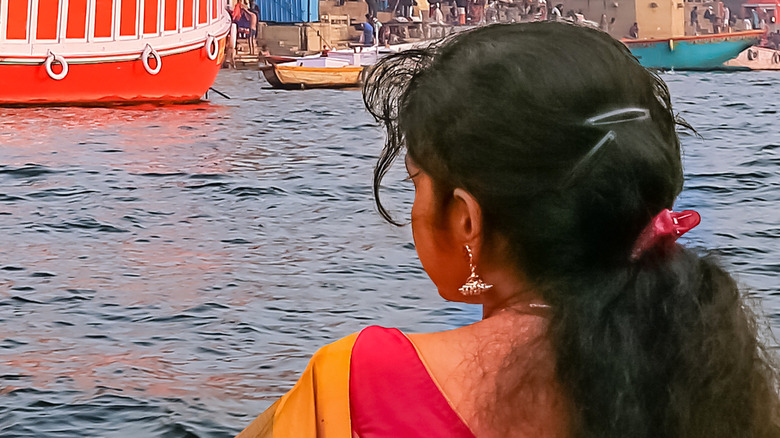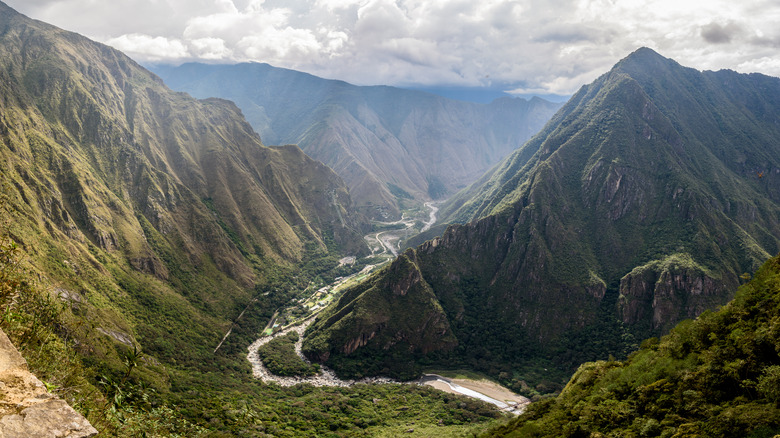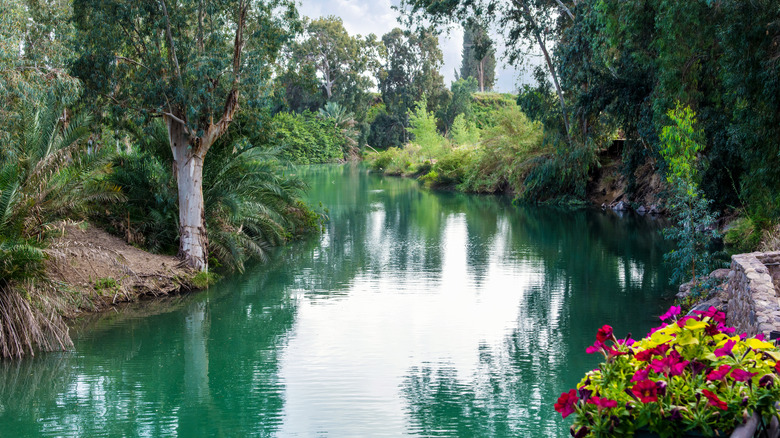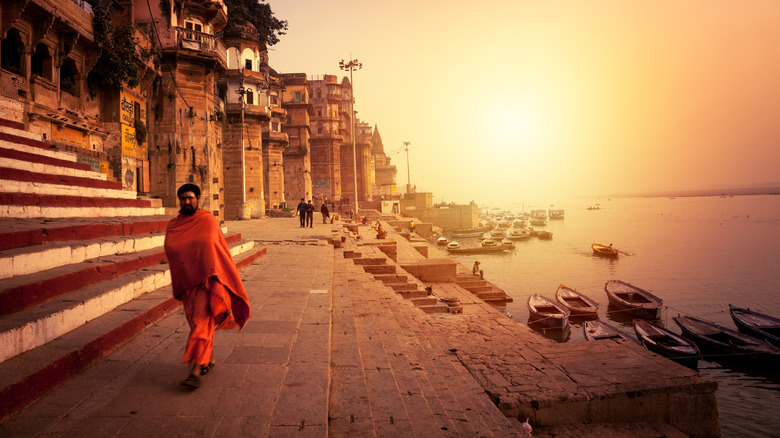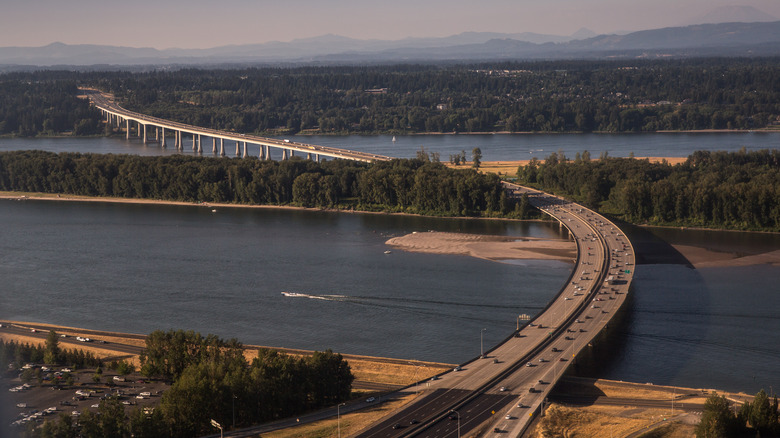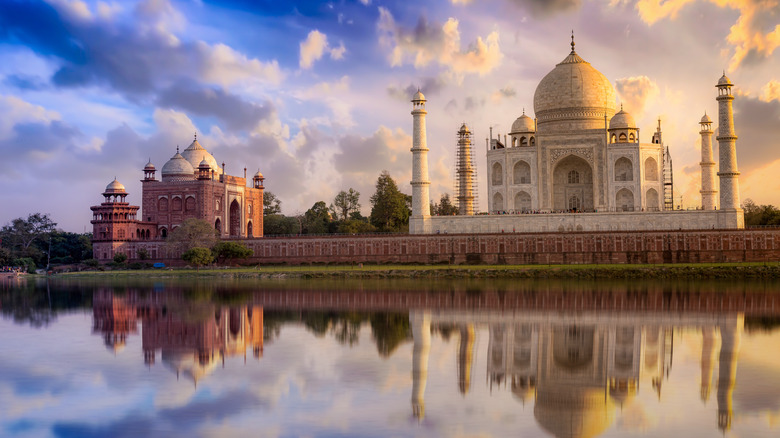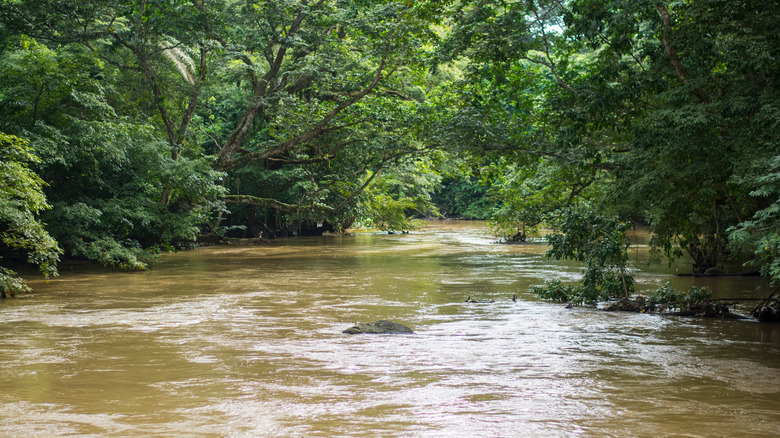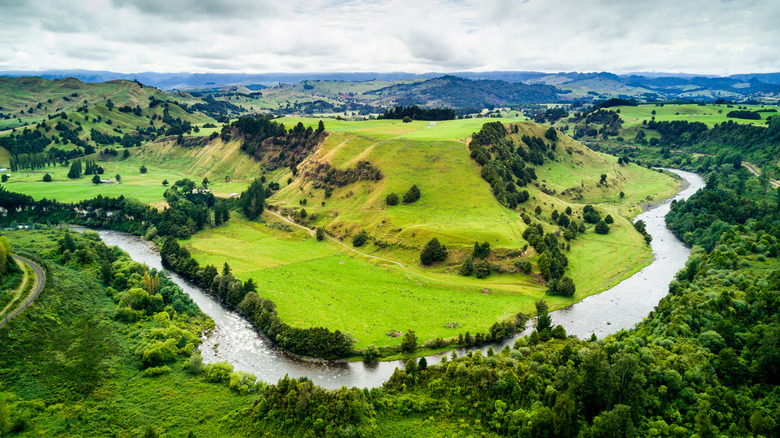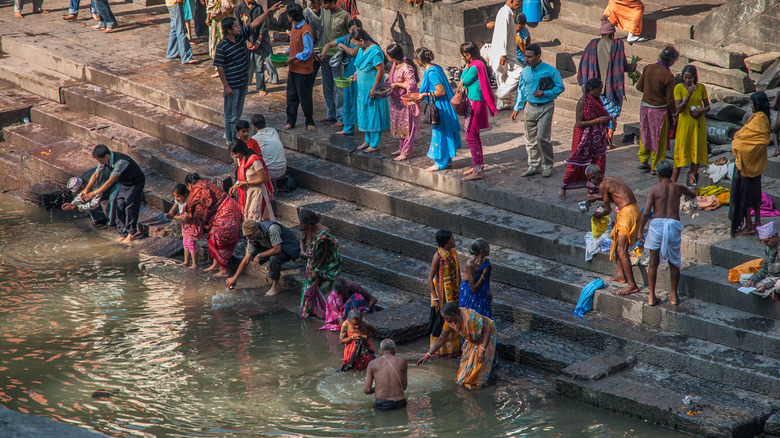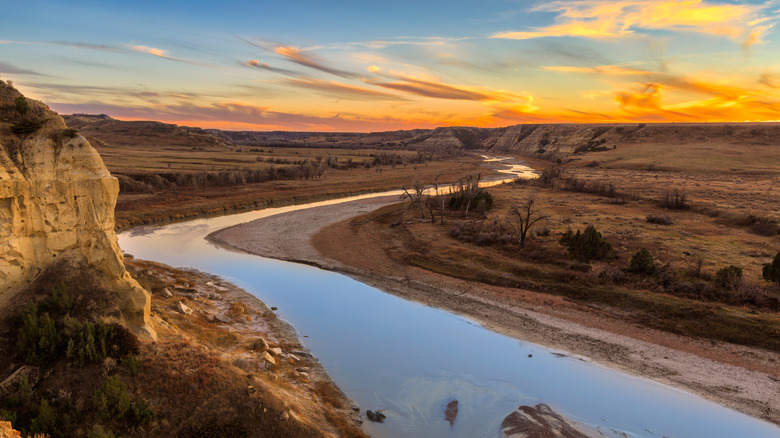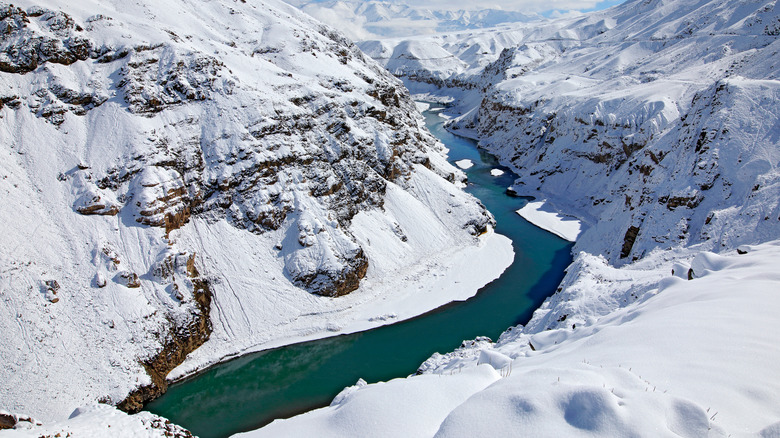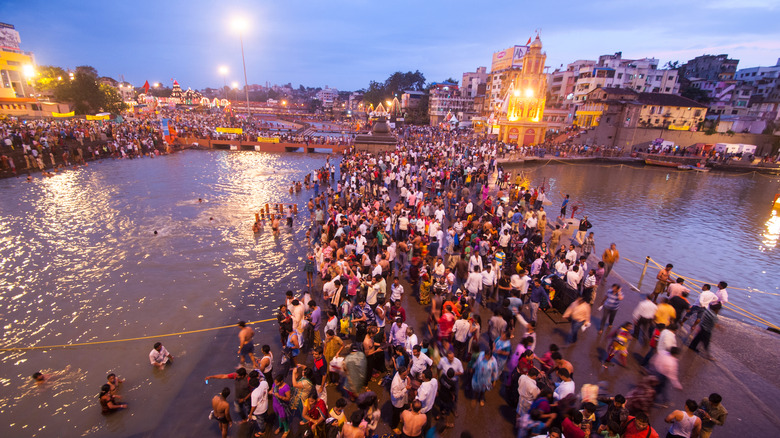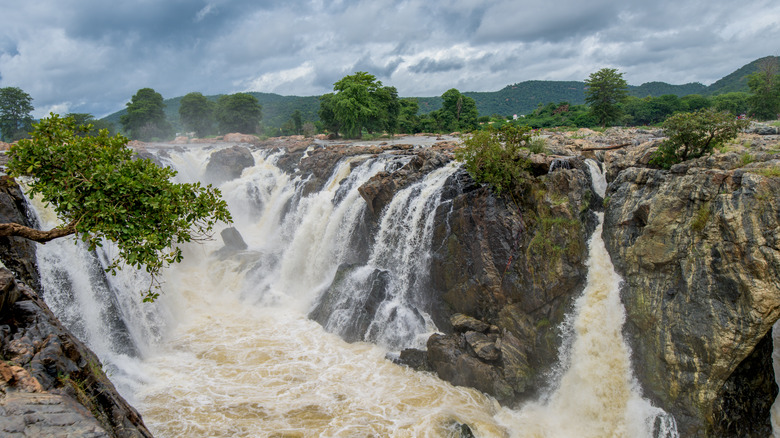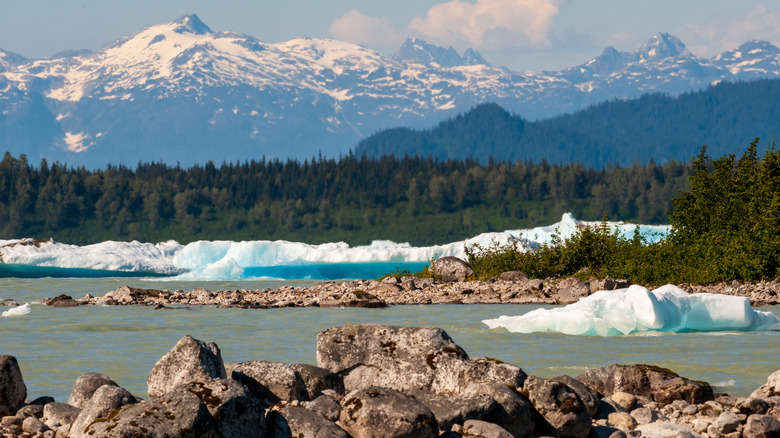The History Of The Most Sacred Rivers In The World
Rivers make up less than 1% of the world's fresh water, but they are a vital resource for many people. They provide drinking water, contain nutrients that nourish the human body, and act as a drain for surface water. Plants and animals need them for survival. People use them for traveling from place to place. Farmers use them for irrigation. Some regions use them to power hydroelectric plants.
Rivers are also sacred to those who practice Hinduism, Buddhism, and other religions. In addition to benefiting locals and visitors physically, they provide spiritual fulfillment. Some of the world's most famous rivers are visited by millions of pilgrims each year looking to take a holy dip in the water in order to wash away their sins. To certain tribes and religious sects, they are essential for living a proper life. In Hinduism, for example, rivers are often considered deities, many of which are represented by goddesses.
While many sacred rivers are located in Asia, North America also has its shares of rivers that are revered by indigenous and Native American people. And one river in Polynesia was even granted legal personhood in order to protect its rights. Check out some of the most sacred rivers on earth below.
The Urubamba River in Peru
The Peruvian Andes is home to Urubamba Valley, which is also known as the Sacred Valley of the Incas. You may be familiar with the area due to its famous tourist attraction, the ancient Incan site known as Machu Picchu. During 500 to 900 CE, the Qotacalla people occupied the Sacred Valley, according to LAC Geographic. Then the Killke people came along followed by the Incan Empire, which overtook the region in 1420. The Sacred Valley was a vital area for maize production, and the Incas used a system of irrigation to properly hydrate its crops.
The Urubamba River is the heart of the valley, and it features several tributaries that are surrounded by other valleys and gorges with villages and archaeological ruins. (The town of Urubamba is located, logically, near the Urubamba River.) According to Tierras Vivas, the sacred river of Urubamba was important to the Incas because it reflected the Milky Way.
The Jordan River in the Middle East
According to the New Testament, Jesus Christ was baptized in the Jordan River, so it holds significant meaning for Christians. The area where John the Baptist baptized Jesus is in present-day Jordan, on the bank of the river across from Jericho, according to See the Holy Land. Jews also find significance in the river because after spending years wandering the desert the tribes of Israel crossed the river to go to the Promised Land. Pilgrims from all around the world have made their way to the river for hundreds of years to soak in what they believe is holy water, according to Origins. Close to one million visitors make the trek each year to one of three baptism sites on the river located in three different areas: Israel, Jordan, and Palestine.
Unfortunately, the river has suffered over the last few decades as a direct result of the Arab and Israeli conflict. It's been subjected to development, irrigation, and pollution. However, it remains, "a boundary and a crossing point, a metaphor for spiritual rebirth and salvation, and a source of holy water." Many believe Christ's baptism in the river purified the water, turning it holy. It has since been considered a "river of life" and a divine manifestation. The place where Jesus was immersed in the river has been an attraction since 4 CE and has even drawn ill and disabled people who want to be healed.
The Ganges River in India and Bangladesh
India's Ganges River (or Ganga) is a sacred body of water to Hindus. The Ganges River Basin feeds the river and is home to more than 400 million people. The river runs from the Himalaya Mountains to the Gangotri Glacier and is one of the biggest river systems on earth, according to National Geographic. Melting runoff from the Himalayas, rain, and tributaries contribute to the sacred river's waters. Its shores are very fertile, so people have been naturally drawn to the area to grow their civilizations. Millions of people count on the Ganges for fresh water for sustenance, fishing, bathing, and more. The Hindus call it Mother Ganga.
Despite its importance to the people of Asia, several areas are so polluted that it's dangerous to swim there. Population growths have also led to increased water usage, which causes a strain on the river. Research has also shown that climate change is adversely affecting the glaciers in the Himalayas, which will lead to lower water levels in the future, which will adversely affect those who depend on its water for daily life.
The Columbia River in the United States
Through the late 1950s, there was an area of the Columbia River known as Celilo Falls (or Wyam/Wy-am), in which Native Americans lived, traded, and fished. The Wyam was North America's biggest waterfall and provided the native people with millions of salmon so they could feed their people. Historically, a half-dozen tribes lived in villages in the area, and for thousands of years they traded, played games with, and shared food and religious ceremonies with other tribes, according to the Columbia River Inter-Tribal Fish Commission. The area included several sacred sites as well as petroglyphs and burial grounds, according to the Sacred Land Film Project.
But in 1957, the U.S. government built a dam, flooding the Wyam, which in turn forced some of the Native tribes who lived there to abandon their sacred sites and homes, something that had already been done to other villages along the river. However, the Wyam people did not leave their homes and still reside in the area today, making it the longest lasting settlement in North America. Wyam, which translates to "echo of falling water," continues to live on in the Columbia River Indian people's spiritual and traditional practices.
The Yamuna River in India
The Yamuna, also known as Jumna, is the Ganges' longest tributary. Just like "Mother Ganga," it is a sacred body of water which the Hindus consider a river goddess. Hindus regularly bathe in the water, which they consider holy, hoping it will spiritually cleanse their souls, according to the Sustainability Times. The river runs through India's capital, New Delhi, and is a source of freshwater for almost 20 million people.
Unfortunately, it is also one of the country's most polluted rivers. Each day 800 million liters of sewage and 44 million liters of industrial waste is dumped into the river, which can carry many types of bacteria and cause a variety of infections. As a result, aquatic creatures can't live in the polluted water, particularly in the area near the capital. It's a major problem because many inhabitants use the water from the river for cooking and bathing. However, pilgrims from all over the country continue to visit the river and take advantage of its purported spiritual properties. They are aware that it is extremely polluted yet believe their ritual purification practices will protect them from contracting communicable diseases.
The Osun River in Nigeria
The Osun Sacred Grove is a forest in southern Nigeria that contains the river Osun, the spiritual home of the river goddess and fertility goddess of the same name, according to UNESCO. The sacred grove and river is located near the city of Osogbo and is critically important to the Yoruba people, who were known to create sacred areas near their settlements. The area contains dozens of shrines, sculptures, and other structures dedicated to the goddess and other deities of the Yoruba people. There are also a couple of palaces, sacred places, and areas of worship along the riverbanks.
The area is also rare in that it contains 20th century artwork alongside its ancient sites, and contemporary artists have revitalized the area, giving it an even stronger identity: "It has become a sacred place for the whole of Yorubaland and a symbol of identity for the wider Yoruba Diaspora."
The Whanganui River in New Zealand
New Zealand's Whanganui River is a vital natural resource that flows through the country's North Island near the Mount Tongariro volcano to the Tasman Sea. The Whanganui tribes have had a special relationship with the river for nearly 900 years, centuries before encountering European settlers. These tribes reside near the river, which is very important to them spiritually, according to the BBC. These people also use it for food and travel.
What makes this river particularly special is that in 2017 it was recognized as a legal person. While this may seem odd, it was a smart way to look after its resources. For over 160 years, the indigenous Maori have been working to protect the river. The Maori people are dedicated to protecting the earth and have a well-known saying, "I am the river, the river is me." Now that the river is considered a legal person, any harm it endures, such as pollution or illegal activities, gives the river the right to sue the offender. Alternatively, the river can be sued, own property, and sign contracts.
The Bagmati River in Nepal
Located in Nepal and India, the Bagmati River is sacred to both Hindus and Buddhists. It flows through Kathmandu, the capital of Nepal, and over the mountains into India. The banks of the river are lined with spiritual sites that people visit to meditate, conduct religious ceremonies, and seek salvation, according to New Spotlight Nepal. The area where two rivers merge, the Bagmati and Bishnumati, are particularly sacred to believers. The rivers host cremations, religious festivities, and body/soul cleansings.
The Bagmati River is a source of drinking water, is surrounded by rice fields and villages, and is used for agricultural purposes as well as sewage disposal. As a result, it's one of the country's most polluted rivers, which can be unhealthy for visitors that swim in or drink its water. But since it's such an important resource, thousands of volunteers have gathered on a regular basis to clean it up, according to Xylem Analytics. The goal is to provide more efficient sewerage and wastewater treatment as well as better waste disposal.
The Missouri River in the United States
Scott Jones, a cultural resources officer for the Lower Brule Sioux Tribe, testified in a 2002 Senate hearing about the Missouri River in the United States. He explained, "The river gave us life and the ability to sustain life. It is still sacred to my people today." Before the Army Corps of Engineers built dams on the river in the mid-20th century, the river flowed through Montana, North Dakota, and South Dakota. It has been an important resource for 26 Native American cultures, such as the Lakota, Dakota, and Nakota Sioux tribes. These days it's considered an endangered historic place, according to the Sacred Land Film Project.
After the dams were built, many Native American ancestral sites were flooded, and interred bodies of indigenous people rose to the surface. Burial grounds were also destroyed. The dams also drove bird and fish species to near extinction. Pemina Yellow Bird of the Mandan Hidatsa Arikara Nation said of the destruction, "The river is our grandfather, and he is sacred to us. This holy being is an endangered river. To me, that's an oxymoron. How can that be? How can our river be dying? How can it be endangered?"
The Indus River in Tibet and Pakistan
The Indus River, also known as River Sindhu, is one of the longest rivers in Asia at 1,976 miles (3,180 kilometers). It starts in Tibet in the Himalayan mountains and flows through Pakistan into the Arabian Sea, according to Pravase. The river was desirable to the Indus valley civilization due to its fertile and well-irrigated shores, particularly in 2500 to 2000 BCE. Inhabitants used it for farming, religious ceremonies, and other activities. It provides water for the Punjab and Sindh region. Those who live in the Sindh region consider it a sacred body of water. The river is referred to several times in the sacred text along with Vedas, Mahabharata, and other deities.
Every June, there is a Sindhu Darshan Festival or Sindhu Festival. Visitors can attend cultural and spiritual events as well as dance performances and other activities. Thousands of tourists and others attend the three-day event and celebrate the river and the surrounding area.
The Godavari River in India
The Godavari is one of Hinduism's seven sacred rivers along with the Ganga, Yamuna, Sarasvati, Sindhu, Narmada, and Kaveri. It originates in the Brahmagiri Mountains and has a large religious significance. Each day thousands of pilgrims converge on the banks of the river in the city of Nashik in the western Indian state of Maharashtra. The river also hosts the festival of Sinhastha Mela or Kumbh Mela, which draws millions of visitors each year, according to Advanced Science News.
The river has both mythological and religious connotations similar to other major Indian rivers. There are several areas that are considered places of pilgrimage, known as tīrthakṣetra, according to IndicToday.
Due to its sacred connection and potential to elevate the status of Nashik (and presumably its economic benefits), there have been efforts to "harness, regulate, and redevelop" the Godavari river area. It's used as a religious meeting point, but the river has also been used to promote certain agendas that have turned it into a commodity for the surrounding region.
The Kaveri River in India
The Kaveri (or Cauvery) is another one of the sacred rivers of India. It originates in the Brahmagiri range in the Western Ghats and flows through Karnataka and Tamil Nadu into the Bay of Bengal, according to Pravase. Its origin includes a tank of water, which many believe is a sacred place to bathe on particular days, according to Divine Traveller. While rivers such as the Ganga are highly revered, Hindu legends consider every river as sacred. The Puranic tradition surrounding the river includes a lot of human work and sacrifices to harness its power, according to Swarajya. It has avoided being part of any war or conflict because "the Cauvery was venerated, and fighting over the river mother would be unimaginable."
The Cauvery has both natural and spiritual significance to Hindus who use it as a food source but also to nourish their souls. One legend about the river concerns the millions of people who take pilgrimages to the Ganga each year. Their holy dips are designed to remove their sins. The River Ganga meets the Cauvery underground, which aids in the cleansing of people's souls.
Klabona: The Sacred Headwaters in Canada
In Northwest British Columbia, Canada, is an area known as Klabona, which is considered the sacred headwaters or birthplace of the Stikine, Skeena, and Nass rivers. This area is culturally significant to First Nation tribes such as the Tahltan, Wet'suwet'en, and Gitxsan, according to the Sacred Land Film Project. In addition to a robust salmon population, the riverscape is full of natural resources such as gold, copper, and natural gas, which has attracted the attention of corporations. So you can imagine the conflict between the First Nation tribes and those looking to make a profit.
The Sacred Headwaters are very important to the Tahltan First Nation and a large part of their traditions. It is where they have taught their children to hunt, trap, etc. Due to the region's potential to generate a significant amount of money from its resources, the First Nations of British Columbia have resisted development that impacts their way of living and cultural traditions, which are linked to the rivers in which they revere.
